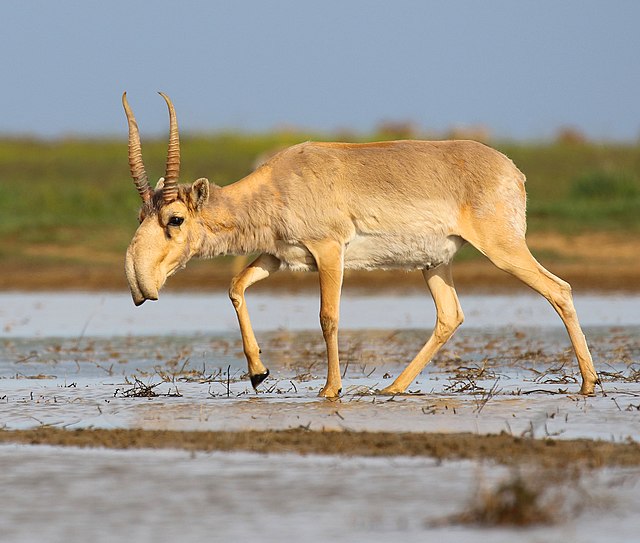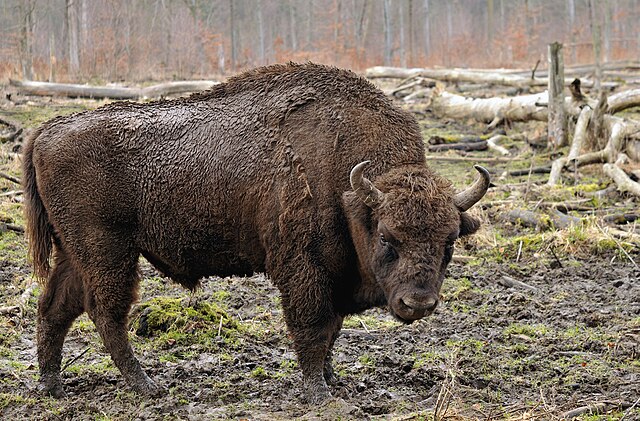Pleistocene rewilding is the advocacy of the reintroduction of extant Pleistocene megafauna, or the close ecological equivalents of extinct megafauna. It is an extension of the conservation practice of rewilding, which aims to restore functioning, self-sustaining ecosystems through practices that may include species reintroductions.
Megafauna of the Pleistocene mammoth steppe
Saiga antelope are one of the animals proposed to be reintroduced in Pleistocene Park. Once ranging from Alaska to France, Saigas are now extinct in Europe and North America, and a critically endangered species globally.
European Bison
Wood bison reintroduction program in Sakha Republic.
Paul Schultz Martin was an American geoscientist at the University of Arizona who developed the theory that the Pleistocene extinction of large mammals worldwide was caused by overhunting by humans. Martin's work bridged the fields of ecology, anthropology, geosciences, and paleontology.
Paul Martin at Rampart Cave, home of the Shasta ground sloth in Grand Canyon, ca. 1975
Paul Martin's "overkill hypothesis" prevails over the climate hypothesis when the timing of megafaunal extinctions in different locales is considered — especially when paired with time of first arrival by humans.
Paul Schultz Martin, 2008, holding a dungball of the extinct Shasta Ground Sloth, with whom Martin claimed to have "a totem relationship."
Native fruits of North America with anachronistic features.








